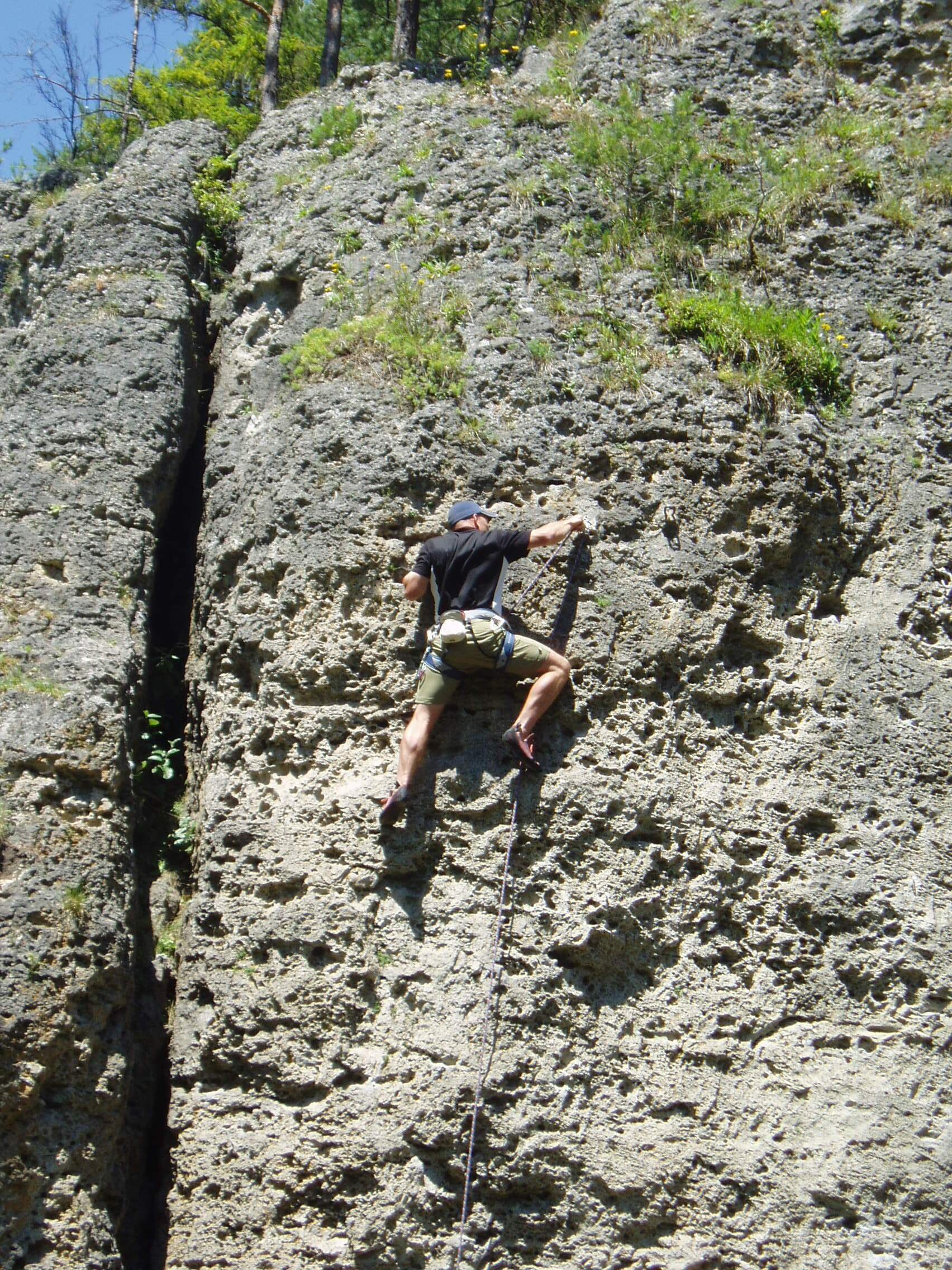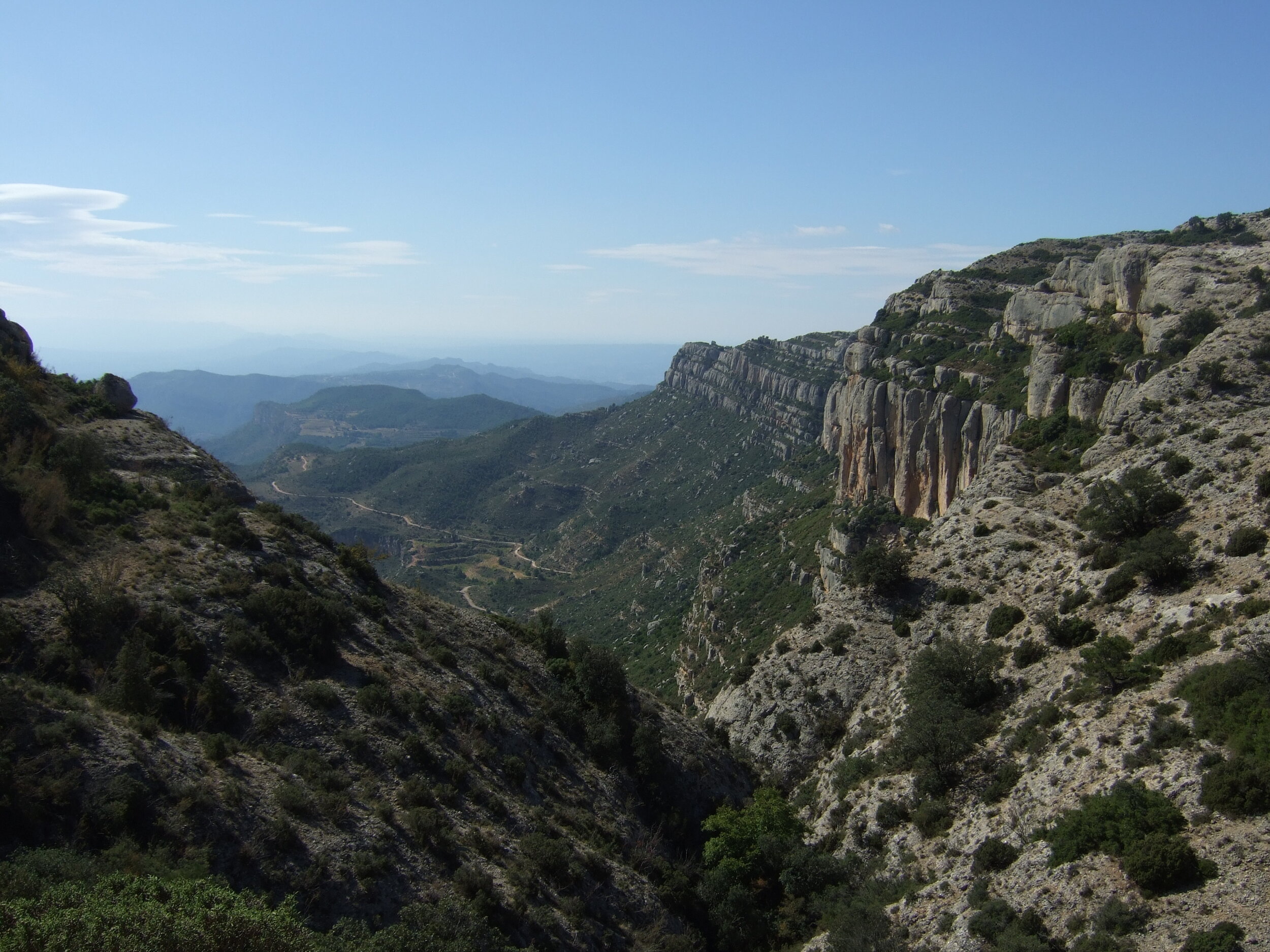5 Favourite Climbing Destinations in Europe
2024 Note: This post was originally written in 2015 and many new areas have since opened up or become more popular destinations. You’ll still find some gems below, places that I’ve loved visiting. Enjoy reading through, and feel free to add your own favourites in the comments below. Jacquie x
Autumn is a time of year when many climbers start to think about winter sport climbing trips in a warmer location. After the long summer days at the crag, climbing on real rock, the prospect of a winter season indoors on plastic can be a depressing thought.
However, with a goal in mind and a climbing trip to train towards, those weeks spent indoors can be a fun and focused time. A time when you bump into your old friends again (you know, those ones you only see at the climbing wall), drink tea, crank up the grades and chat about warm sunny destinations and bolted limestone.
I've enjoyed some great climbing trips over the years. As a climber in the lower grades (usually leading up to F5's outside and seconding up to F6b/6c), if there's plenty there to make me smile it'll pretty much be a good area for lots of other people. Add in the fact that I've often visited these places with friends who climb much harder grades and you’ll find that between us, we're pretty much covering the spread of grades up to F8a - surely enough to cover the majority of climbers reading this blog!
With that in mind, I thought I'd share 5 of my favourite European climbing destinations for some sunny sport climbing. Not all these are winter venues, but all are worth repeat visits and, for that reason alone, I class them as 5 of the best.
Maybe you'll find a new area you've not visited before, or perhaps reading about one of the destinations will bring back some happy memories.
So grab a cuppa and sit back and enjoy.
1. Costa Blanca, Spain
My first ever climbing trip abroad (more years ago than I care to remember) was to the Costa Blanca. We stayed near the coast and climbed at the popular venues of Sella, Gandia and Toix.
It was good, but I've since found that there is so much more to the Costa Blanca, backed up by the vastly extended Rockfax Guidebook which now covers the area.
You can get away from the high rise hotels, crowds and English bars by staying in a little Casita up in the hills. It may cost more, but it will give you a totally different holiday. Alternatively, if you want to make your visit a cheap and cheerful budget break, check out the apartments on the coast.
Base your stay around the Murcia area and you'll find it a much quieter location than the Benidorm area, opening up a whole different set of crags like Orihuela within a short drive.
More recently, we stayed up in the hills near the Jalon Valley and combined climbing on fabulous rock at Alcalali with walking in stunning countryside up in the mountains.
I have to admit that I'd fallen out with the Costa Blanca a bit over the years, but that last trip rekindled my love of the place. With a high likelihood of sunny conditions all winter, amazing Spanish food, beautiful rural villages and fantastic limestone (usually well bolted for outdoors), what's not to like.
Best time to visit: November to April (it can be too warm at other times and the Rockfax guidebook generally has south facing crags)
Guidebook: Rockfax Costa Blanca
Getting there: Flight to Alicante or Murcia, plus car hire
Further Information: UKC guidebook database
2. Frankenjura, Germany
When friends first invited us on a climbing trip to the Frankenjura, I laughingly declined stating that there would be nothing there for me to climb. Frankenjura is home of the climb Action Directe, one of the first 9a's ever to be done. It was also home of the legendary Wolfgang Gullich and well known for steep, difficult routes.
Thankfully, I was persuaded to give it a go and loved it from the start - so much so that I returned 3 years running and still want to go back.
The rock is solid, pocketed limestone and beautiful to climb. There are grades and crags from very easy to very hard. Many of the crags are small places, tucked away in the woods (perfect for shade on hot days).
One thing I had to get used to was having only 1 bolt at the top to lower off (instead of the more typical 2) and some of the bolting was entertaining to say the least (definitely take a clip stick for the first bolt!).
Tucked away in South East Germany, the Frankenjura has beautiful chocolate box villages, amazing locally produced food, incredible cakes and friendly locals who invite you to their village beer festivals.
The only downside can be the weather. Located in Northern Europe, it's a great place to visit in the summer (we went in July and have friends who have visited in September). However, you do sometimes have to take pot luck with the rain. I guess the steeper you climb, the less of a problem it becomes!
Being English, I'm well used to dodging the weather and I'm long overdue a return trip to the Frankenjura!
Best time to visit: June - September
Guidebook: Franken 1 & Franken 2 (Gebro Verlag)
Getting there: Ferry to Rotterdam (or Channel tunnel to Calais) and drive
Further Information: Rock Climbing in Germany
3. Ariege, France
We visited the Ariege in the French Pyrenees just before the Rockfax guide was produced (in fact the team were staying next door on a research trip at the time). Using local guidebooks, we went to a variety of crags from bolted limestone (Sinsat, Calames, Alliat, Sibada) to bolted granite (Auzat) - all in a beautiful setting.
The rock here was beautiful to climb on, although the grades could sometimes feel a bit difficult. Having not visited with the Rockfax guidebook, I'm not able to comment on whether that's still the case.
The Ariege area is simply stunning, nestled right in the Pyrenees. It lodged itself firmly in my heart and I've hankered after a return trip there ever since.
If you want a day off from climbing, you can get right up into the mountains by car and then walk from there - the Plateau to Beille is perfect for this. There also looks to be some great mountain bike trails to sample and for a more relaxing rest day, check out the thermal pools and street cafe's at Ax les Thermes.
Best time to visit: The Ariege is said to be a year round climbing destination - visit in winter and climb at sunny crags, go in summer and look for shady crags. Winter is ski season in the area so can be very cold out of the sun. We visited in late May, which was perfect!
Guidebook: Rockfax France: Ariege, Niaux Limestone (Graham Lynch), Autour de Bedeilhac (JD Achard)
Getting there: Flight to Toulouse or Carcassonne and car hire (although tempting to drive next time!)
Further Information: Chez Arran climbing information, Base Calames climbing information or UKC guidebook database
4. Costa Daurada, Spain
Until I visited the Costa Daurada, I hadn't really appreciated the vastness of Spain and difference in locations.
I’ve visited the area twice now, basing ourselves the first time high up in the Siurana area – home to La Rambla 9a+. The location is amazing, high on a plateau and dropping down to access the climbing.
The grades here are stiff, despite some easy numbers. However, as the common phrase in Siurana goes, if you don’t agree with our grades, go away and train harder for next time!
Having said that, the climbing is so wonderful that climbing a few grades lower than usual becomes irrelevant. I loved it here so much that a return trip beckoned, this time based in the town below Siurana, Cornudella de Montstant, which opened up other climbing areas such as Arboli and Margalef.
Visiting the Costa Daurada area gives you a peaceful retreat in the hills. The Monstant region is a national park with amazing walking and a fantastic wine producing region.
Best time to visit: We visited in Sept/Oct. The height of summer is probably too warm and due to the height it can snow in the depth of winter due to the altitude. Spring and Autumn are good times to visit.
Guidebook: Catalunya: Taragonna Climbs (Pete O'Donavan & Dani Andrada), also Lleida Climbs
Getting there: Flight to Barcelona (or Reus in season) plus car hire
Further Information: Lleida Climbs or UKC guidebook database
5. Haute Provence, France
Based near Mont Ventoux, a climbing trip here combined the very best of soaking up French living with some excellent climbing on solid limestone. The main downside to the area is the length of drive to various crags, but then it's so pleasant to be out on the roads here and seeing the French countryside, that it was no real hardship.
The crags we visited included Combe Obscure, St Ledger, Malaucene and Venasque - all very different but equally enjoyable. The great bonus of the area is that after a good day on the crag, there are plenty of cafe bars to sit back and chill out. It's also a big wine producing area so there’s plenty of choice from the local vineyards.
The area is iconic in the world of cycling, with the summit of Mont Ventoux featuring regularly on the Tour de France (and 3 different routes to the summit to choose from). It's well worth a drive to the summit on a rest day - one day I'll tackle it by bike!
Best time to visit: Any time of year, choosing sunny crags in winter and shady crags in summer. We've visited in both June and September, with great conditions.
Guidebook: Rockfax France: Haute Provence, plus local guidebooks eg. Escalades autour du Ventoux (FFME) - especially if visiting St Leger where there are signs "mort a Rockfax" (death to Rockfax) to encourage local guidebook usage.
Getting there: Flight to Nimes and car hire, or Channel Tunnel to Calais and drive (overnight break or long drive in one stint)
Further Information: UKC guidebook database
Other hugely popular areas include Kalymnos (Greek Island) which I visited just a year after the first climbs had been bolted. We shared the crags with only a handful of other climbers and made the second ascent of many climbs. I loved the combination of a Greek holiday with a climbing trip and we ventured back another year. The popularity of the island has soared in subsequent years and I fear that our memories of a peaceful Greek island climbing trip would be spoiled by a visit there now.
Majorca and El Chorro in Spain are also popular winter destinations, but I've no first hand experience to report - yet!
Most of these destinations were learned from chatting with other climbers and I always love to hear about new places, so please share your own favourites in the comments below and I’ll take a look for a future trip.
Get new adventures sent directly to your inbox. Emails usually go out every other week.
SIGN UP TO MY NEWSLETTER










